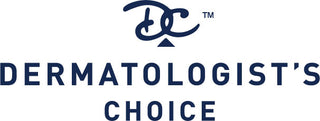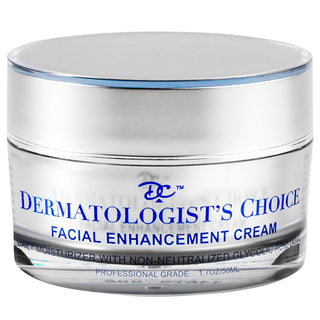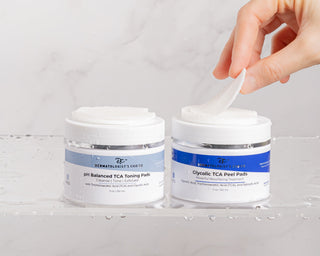Chemical peels are a popular, relatively inexpensive, and generally safe method for treatment of some skin disorders [or skin concerns] and to refresh and rejuvenate the skin, according to The Journal of Clinical and Aesthetic Dermatology. If you are thinking of applying a chemical peel to your skin or just wanting to learn more about this effective treatment then you're in the right place. Here at Dermatologist's Choice we are experts in chemical peels and how to achieve dermatology-strength results at home. Here's what you need to know to get started.
What is a chemical peel?
The Mayo Clinic describes chemical peels as a procedure in which a chemical solution is applied to the skin to remove the top layers. The skin that grows back is smoother [clearer, and brighter]. With a light or medium peel, you may need to undergo the procedure more than once to get the desired results.
Further, chemical peels are used to treat wrinkles, discolored skin and scars- usually on the face. They can be done alone or combined with other cosmetic procedures. And they can be done at different depths, from light to deep. Deeper chemical peels offer more-dramatic results but also take longer to recover from adds the Mayo Clinic.
Are chemical peels safe?
Short answer, YES. Chemical peels are actually mainly derived from plants and fruits. So the word "chemical" should not turn you off. It is not toxic or dangerous for you to use.
The Journal of Clinical and Aesthetic Dermatology says, peels are safe and tolerated with mild discomfort, such as transient burning [or what we call the Trustworthy Tingle], irritation, and dryness of the skin. This is normal and can be best avoided or minimized with a lower concentration of acids or by applying plain lotion over the peel. Those with more sensitive skin should start with a milder peel and/or use less often. Those with normal to oily skin can mostly tolerate medium to deep peels and higher concentrations of acids. Tolerability can be influenced by many factors, such as peel agents, concentration, depth, skin types, and concomitant use of skin care products. The best way to prevent complication is to use an appropriate peel depth that balances efficacy with known adverse events. Learn more about the different concentrations and depth of peels here.
In fact, chemical peels are very common both in the dermatology office and for self-application at home. The American Society of Plastic Surgery reported that more than one million peel procedure were performed by its members in 2008. Now in 2021 that number has increased. While chemical peels have upsurged, the stronger concentrations and deeper peels are best performed and/or supervised by a dermatologists and plastic surgeons who have experience and knowledge with cosmetic procedures than others. However, don't let this discourage you. the technology of at-home peels has improved and with the use of Dermatologist's Choice skincare you can receive very similar results as you would in a dermatologist office.
Here are the current chemical peels available.
A wide variety of peels are available both in a doctor's office, online, and at the store with different mechanisms of actions, which can be modulated by altering concentration. What this means is knowing the depth of the peel you desire for your particular skin concern will help when it comes to choosing the formulation and concentration. Not all over the counter products with chemical peel acids are made equal. Learn more about this here.
Chemical peels are typically formulated with AHAs and BHAs. AHAs are alpha hydroxy acids including the most popular, glycolic acid. BHAs are beta hydroxy acids including salicylic acid. Other widely used acids include lactic acid, trichloroacetic acid, and phenol acid. Other chemical peels are known by the mixed solution of multiple acids to form a chemical peel, such as Jessner's solution, Coleman's combination, and Baker-Gordon phenol peel.
When is the best time to use a chemical peel?
Anytime. Chemical peels are relatively simple to use and require minimum down time after application. In most cases, when you use an over the counter chemical peel product or a product including the chemical peel acids there is little to no down time.
Ready to get started with a chemical peel? At Dermatologist's Choice we have several options based on your skin type and skin concern. For best results select the solution that is right for you.
Normal to Dry/sensitive skin. Try the Facial Enhancement Cream
Mature skin with deep wrinkles and sun damage. Try the Ultra Anti-Aging Cream
Oily skin with acne and skin hyperpigmentation. Try the Glycolic Peel Cleansing Pads.














